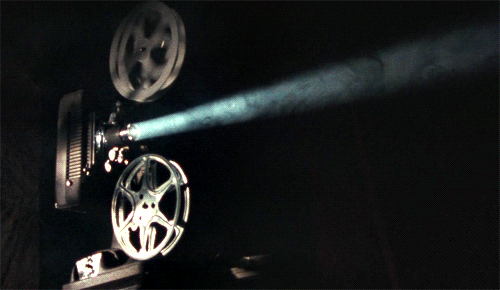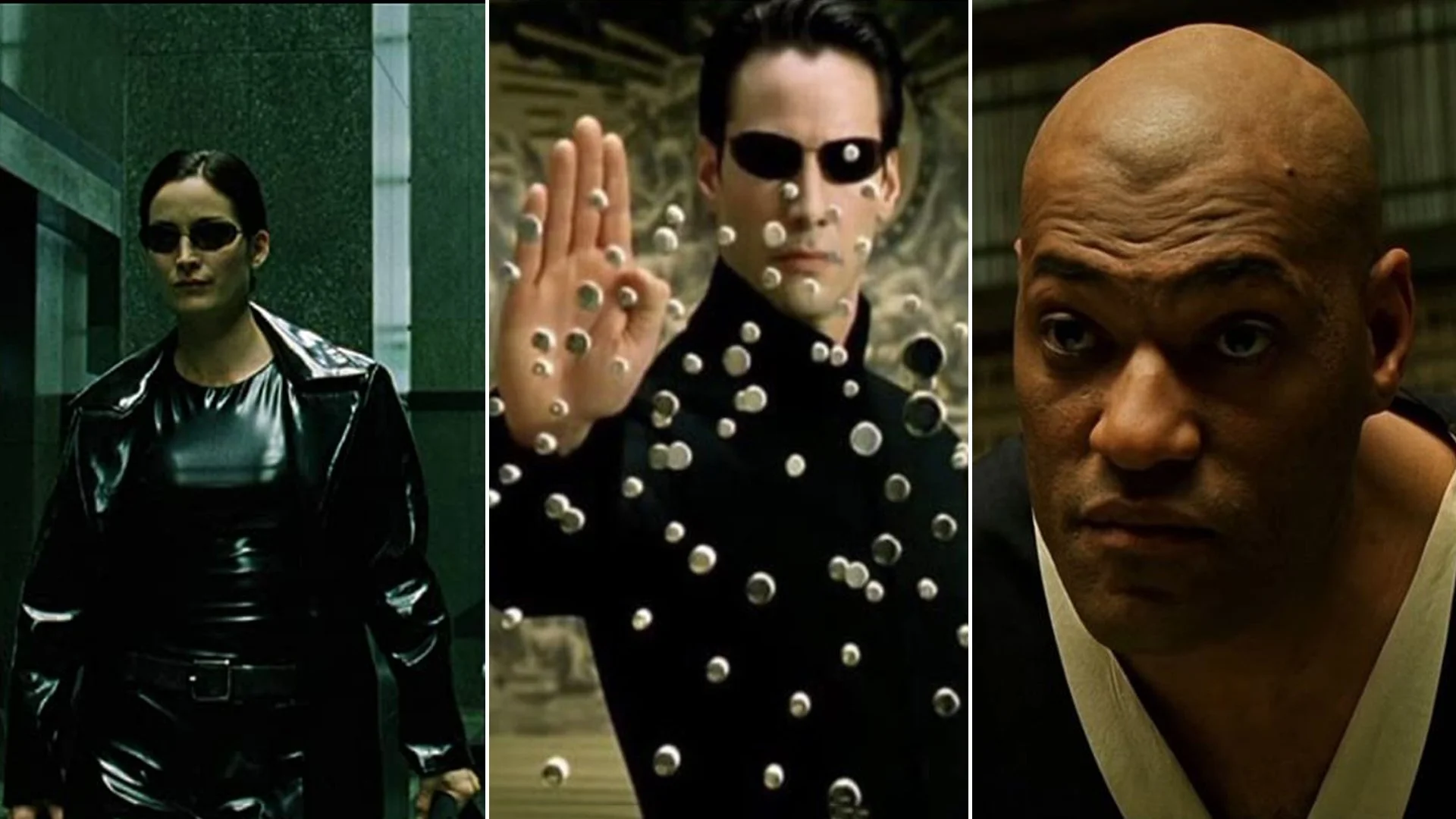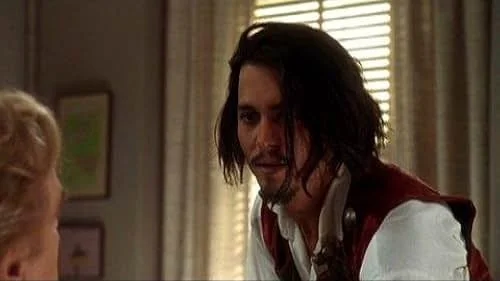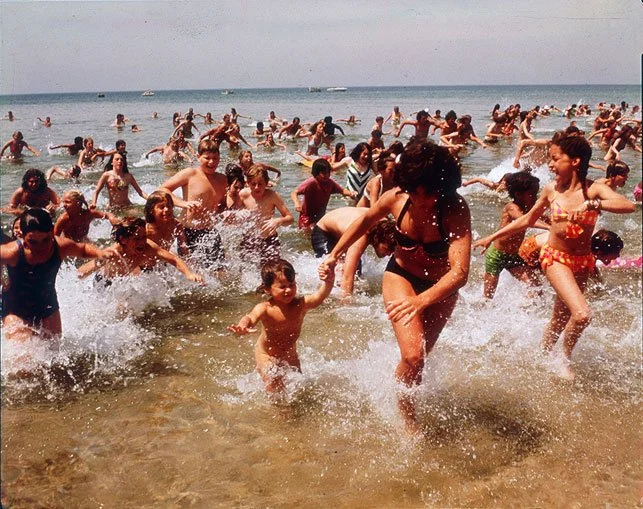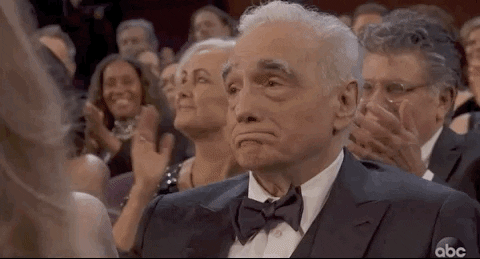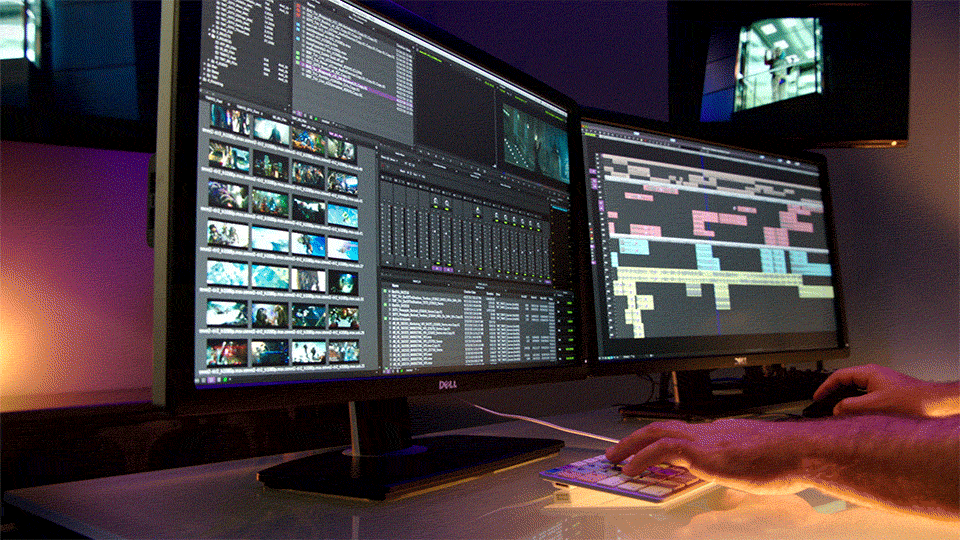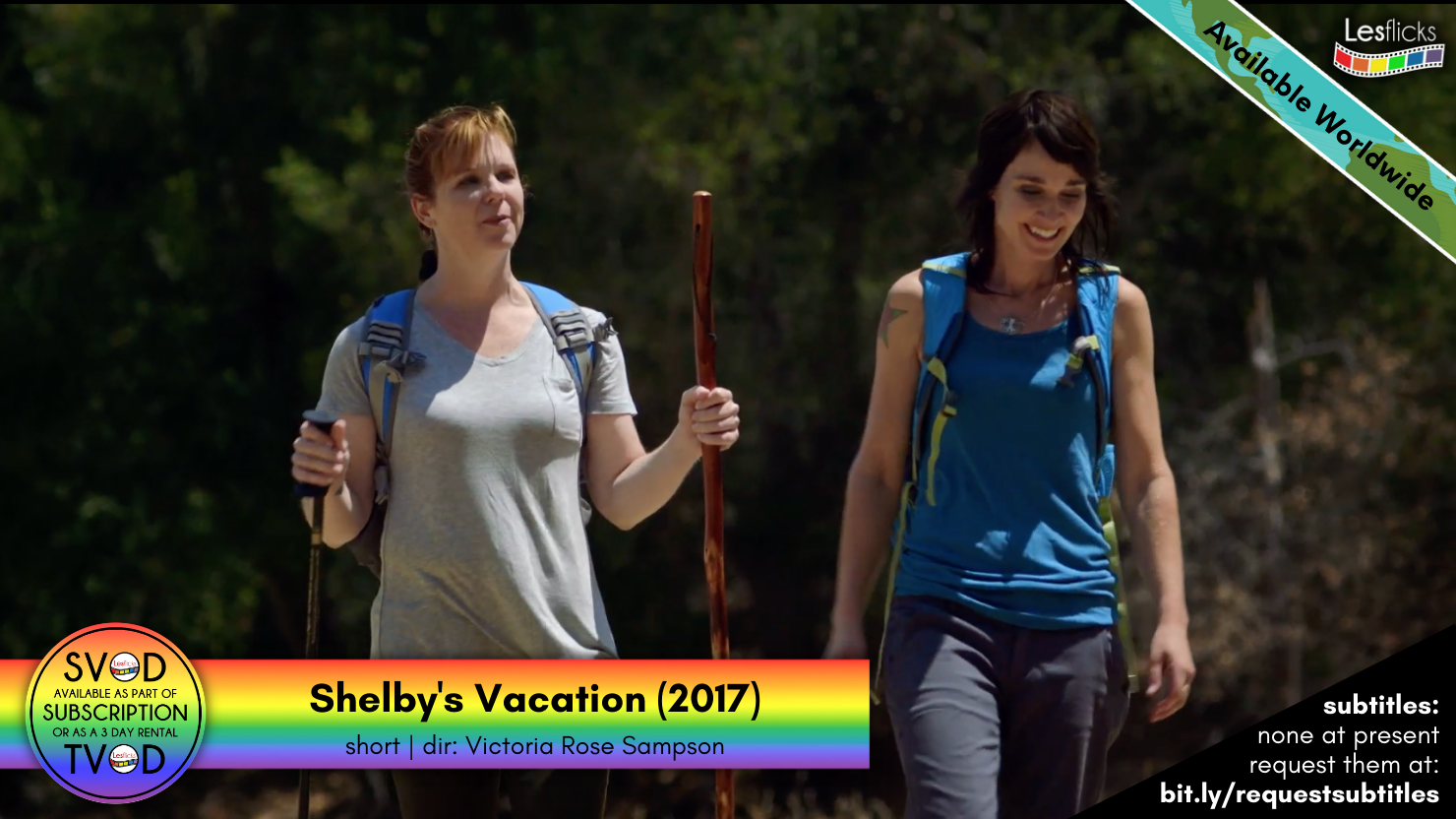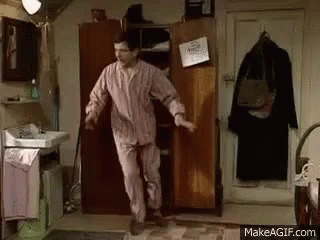Alright. Here we are. I’ve been thinking about this list for a while. And I must first say, these are not necessarily my favorite films nor is this a list of what I think are the greatest films (although there will surely be some overlap). This is a list of films that have shaped me in some way, artistically or otherwise. Therefore it should come as no surprise that many of these films were produced during my youth. Warning: there will be blood spoilers! So without further ado…
Honorable Mention: Heat (1995)
Well I guess a little ado. First is this honorable mention. Michael Mann’s Heat was considered for this list in a way that’s distinct from the other films below. When I first saw it, I don’t think I spoke for a coupe of days (the only other film that did that to me has the honor of being #1 on this list). But it was not because of the powerhouse performances or the meticulously choreographed bank robbery scene. No. For me it was personal. It was the first time I ever saw an actor I cherished die on screen at the end of a movie. And let me tell you - that did something to me. The line between reality and fiction blurred and I felt as if I just watched a true legend die, in some sense, for real. I mourned and I grieved, as if I truly witnessed the shooting and death of Neil McCauley? Of Robert De Niro? I didn’t know. But the conclusion leapt out of the screen and into my life. A movie, I realized, could affect me deeply…
15. Dreams (1990)
Akira Kurosawa’s collection of eight vignettes, all based on his actual dreams still haunts me. While not heralded as his best film (and there are many that could rightly claim this title), this one is ingrained in my memory, maybe (ironically) in my unconscious.
Firstly, I adore short films and to be honest I do not think they receive the creative credit they deserve, unlike how a great short story is equal in consideration alongside longer pieces of literature. I digress.
There are two shorts that really stick out to me in this slightly obscure anthology. The opening short “Sunshine through the Rain” and “The Tunnel.” Watch them. The first is an anxious puzzle waiting to be solved, while the latter is a confrontation of transgression.
I am currently teaching “Dreams and the Unconscious Mind” at Long Island University and perhaps my own mind is connecting this cinematic experiment to dream interpretation. After all, the creation of this film is literally: an artist is having a dialogue, through the making of the film, with his psyche. No doubt Freud would point to the primal aspects of man and the return of repressed guilt when examining the dream sequences. Forbidden desires would be ripe and I’m sure he would see the fulfillment of a wish in each and every short, the film acting as a manifestation of the unconscious – applied psychoanalysis if you will (much like Surrealism).
In some sense, I think all the characters in all the shorts are Kurosawa himself, all engaging in some sort of confession. This deep delve inwards is inspiring and reminds me that the most intricate and complex stories need not come from the vast external world, but from within.
From a production standpoint, I think it’s a little too cool that after Kurosawa had issues financing the film, Steven Spielberg and Martin Scorsese (who also plays Vincent van Gough in one of the shorts) assisted in securing funding via Warner Bros. This speaks to me as an artist. Kurosawa was already a living legend. And he couldn’t find funding for his passion project. Who steps in to help? Two other living legends of the cinema. It showed me how true artists can stick together and recognize when a director has something important to say and explore. And just to add another legendary name to the mix, it is said that Kurosawa only asked Scorsese to act in his film after Francis Ford Coppola convinced Kurosawa that Scorsese would accept the role. This film, to me, represents a melting pot of directorial incitement.
14. Atonement (2007)
“Love is a story - one we like to tell each other. It’s a story that changes over time. Undergoes lots of revisions. And most often the original story gets lost in the process.”
This is dialogue from my film The Museum of Lost Things, which is based on Dennis Pahl’s short story of the same name. It is the thesis of the film and there’s no doubt, as I was thinking about the project, I was inspired by the spirit of Atonement.
While my film was a comedy, this piece is utterly heart wrenching. Joe Wright’s romantic war drama is hauntingly beautiful and equally astounding.
The IMDB premise reads: Thirteen-year-old fledgling writer Briony Tallis irrevocably changes the course of several lives when she accuses her older sister’s lover of a crime he did not commit.
What strikes me here is the facelift of an old filmmaking cliché – that being: Surprise! What you thought happened never really happened! But this film presents that mechanism in a fresh way. I did not see it coming whatsoever (obviously I did not read the novel).
Aside from pulling the rug out from under us, this film is daring in its construction of narration. Revisionism. The entire film is an exploration of what it means to reinterpret life and history as a means to find happiness, perhaps not for oneself, but in order to right a wrong. A very guilt-ridden wrong.
What is the relationship between fiction and reality? Can fiction be a solution for what life gets wrong? Or is fabricating a happy ending a selfish act, a mere penance for culpability? At what point should one forgive oneself?
Theses are all profound questions the film asks but cleverly never answers, giving the audience the ability to grant atonement or not.
Brilliant.
13. Night on Earth (1991)
Another anthology film! This time by Jim Jarmusch. The plot is simple. Five taxi cab rides in five different cities. That’s it. That’s the entire film. Five vignettes explore the relationships between drivers and passengers in L.A., New York, Paris, Rome, and Helsinki.
You’re saying the entire film essentially takes place in taxis? Yes. That’s exactly what we’re saying.
And yet at no point, for me, did this piece feel tired or contrived. I never knew so much interest and excitement could stem from 129 minutes confined to a (usually) moving vehicle.
The cleverness rests in the seemingly simple premise. In life we tend to think the destination is the thing worth getting excited for, the story worth recounting and reliving. The film takes that idea and turns it on its head. It is the land of in-between that is showcased here. Chance encounters of random divers and passengers crossing paths. Some are on their way to the airport, others are returning home. And yet there are these liminal experiences that have the potential to shape lives. I think about this film almost every time I step in an Uber or Lyft. It is a reminder that there are no throw away scenes, whether in art or life.
Coming from New York I am surely biased but I could listen to Giancarlo Esposito and Rosie Perez scream at each other all day. But don’t sleep on some underrated but stellar performances by Roberto Benigni, Gena Rowlands, Winnoa Ryder, and Béatrice Dalle as well!
12. Love Streams (1984)
A Woman Under the Influence (1974) almost claimed this spot, as it’s my favorite Cassavetes film with arguably one of the greatest film portrayals of all time (Gena Rowlands as Mabel Longhetti).
However, when I think of John Cassavetes’ influence on me, it all boils down to one scene. And that scene comes from Love Steams. You may recall it. As a scene, it’s relatively basic. A brother and sister, both wounded from love, in a kitchen. It’s late. They’re tired. He’s smoking a cigarette; she’s putting some coffee on after coming home from a date. What starts off as a conversation about creativity really becomes a questioning of need.
But none of this is revelatory for me. For me it’s the cinematography, which is simplicity itself. You never see all of Rowland’s character and all of Cassavete’s character in the same frame. As a matter of fact, once she sits at the kitchen table, the camera sits vigilantly, only capturing half of the table. Cassavete’s hand comes into frame, as if intruding into her world.
The setup defies expectation and that’s why it moves me so much. Furthermore, it highlights the isolation of these two characters. They’re together as family but they are completely alone. We see half of a picture as they each feel like half of a person, she battling depression, he succumbing to nihilism. It’s an ever-poignant reminder that direction can be figurative and cinematography can be a metaphor for the world the lens is capturing.
11. Stalker (1979)
What can one say about Andrei Tarkovsky that hasn’t already been said? One of the greatest director’s of all time has a style all his own. It’s slow. It’s deliberate. Reflective. Dreamy. Yet completely and utterly enthralling. He sucks you into his worlds and never let’s you go.
I don’t think I’ve ever been able to point my finger to the exact reason why Stalker is so unbelievably compelling. It’s not just the breathtaking imagery. I think, for me, it lies in the uncertainty of the journey. As a guide leads two men through the off- limits “Zone” to find a mysterious room that grants wishes, we are catapulted into the enigmatic puzzle of a world that seemingly has different rules than ours.
We journey alongside these characters for over 2 hours and 40 minutes. And finally they get to the room. And ultimately no one decides to go in.
Mind blowing. And yet, as the viewer, you don’t feel unsatisfied. Perhaps that is what’s most special.
Much like Tarkovsky’s work, I find this ending quite metaphysical. I have my own personal interpretation that seems evident to me but I’m sure Tarkovsky himself, and many viewers, view it very differently. I tend to think we all have that door in our life. The one where on the other side is an answer but deep down already know that answer. To confirm it could be detrimental to your well-being. What is a world without faith? Without hope? Without magic and superstition? What might it mean to truly, one day, know all there is to know? To have your greatest wish granted? That room is a microcosm of all those big questions. The film begs the question – do you really want to know?
10. Crimson Tide (1995)
When faced with a possible nuclear holocaust, is it more ethical to obey your perception of commands or to allow your conscience to dictate your actions?
This is at the core of what is, in my opinion, one of the most underrated movies of all time.
As a matter of fact, it forever shaped my own sense of morality amidst uncertainty.
It’s a philosophical conundrum disguised as an action thriller. But make no mistake. This well-balanced and well-structured film is a gem. A diamond in the rough drenched in political philosophy and moral psychology. It’s an extremely smart film that pits two powerhouses opposite one another.
Gene Hackman plays Captain Ramsey, a veteran Commanding Officer of a submarine that willfully follows orders. He represents deontology (a duty to follow orders) to a T. Opposite him is his second in command, new to the ship, Lieutenant Commander Hunter, expertly portrayed by Denzel Washington. He takes on a more utilitarian view of the world (where the right choice is always the one that causes the least amount of harm).
The entire film is an ethical dilemma that constantly has you questioning who is in the wrong and who is in the right. Their leadership skills are both tested and they each prevail, planting the seeds of two skillful and capable commanders in one’s mind.
Crimson Tide is a wonderful metaphor for all of us, especially in today’s world. The officers are all trapped in a submarine (much like how we are all trapped on this floating rock we call Earth). Isolationism is, of course, a breeding ground for tribalism and global tensions are running high as the film begins. The submarine has the ability to launch nuclear weapons and the crew is divided in what their orders are and how they are supposed to carry them out. Mutinies occur. Concepts of power, reason, and even the evolution of masculinity take center stage as Washington’s reflective and analytical drive goes head to head with the old-school aggressiveness of Hackman’s.
What I love most about this film is that is forces you to take a side in the middle of the story. Whose side are you on? That is to say, if you were in these situations what would you do?
I find myself, to this day, going back to YouTube to watch clips of the keen writing and humanizing characters. I appreciate it more every single time. I’ve also watched our country shift as to whom the majority might back. This is, of course, my perception, but I think it a valid one.
The two characters very much symbolize the angels and devils on our shoulders, begging us to be strong and impulsive as opposed to calm and rational. It is a film that helped shape my own personal code of conduct and ethics.
And the kicker is, in the end, they are told, “In so far as the letter of the law is concerned you were both right. And you were also, both wrong.” I have always found this to be a very disturbing truth. Sometimes we do nothing wrong and still fail. Another fictional moral hero of mine, Captain Jean-Luc Picard reminds us that, “It is possible to commit no mistakes and still lose. That is not a weakness. That is life.”
Captain Picard and Lieutenant Commander Hunter should hang out sometime. Might be wild.
9. My Dinner with Andre (1981)
When it comes to theatre, I don’t need much. Give me a table, two chairs, and two dynamite performers. This, to me, is the pinnacle of stage acting. To strip away all the spectacle and get down to the last level of raw.
It is extremely rare for a feature length film to be able to pull this off. But that is precisely what this drama does.
Two friends go and out to dinner and have a conversation over their meal. That’s the film. The entirely of it.
But let me tell you. You will very quickly learn what kinds of conversations are worth having in life because absolutely nothing here is surface. This deep and meaningful back and forth never falters and you feel you are a third guest at the dinner table, simply but astutely listening. The discussion ranges from art and the theatre to travel and spirituality. From humanism to the self-made prisons we have built for ourselves and are all living in currently but cannot see.
It is simultaneously intellectual yet deeply grounded in reality, thanks to the differing perspectives of the two interlocutors.
But above all else it is about the complications of friendship. These two, André Gregory and Wallace Shawn (fictionalized versions of themselves) leave Café des Artistes having experienced catharsis. They were both heard. They both spoke. They both listened. They disagreed. And they agreed.
To me the film is rejuvenating, a much-needed reminder of the extraordinary power of words. As they say, we need free speech where arguments and ideas can die in battle. So we don’t have to.
8. The Grand Budapest Hotel (2014)
Wes Anderson, like many aspiring directors, has had a profound inspiration on my own artistic style. I LOVE symmetry and center framing while complimenting such balance with whip pans and straight-on dollies. I love characters walking in and out of frame. I appreciate his focus on color and the meticulousness he approaches every frame with.
Of course this essentially describes every Wes Anderson film. Naturally, I love most of them. But to me, The Grand Budapest Hotel is just next level, even for someone in his own category.
Every single frame in this piece is a bold and exquisite work of art. Pause it at any moment and behold. Just. Behold.
The plot is deliciously absurd and the characters ridiculously delightful. And honestly, yes, you can analyze and explore themes of fascism, friendship, and nostalgia but to me just LOOK AT IT!
Okay fine, listen as well because Alexandre Desplat’s soundtrack is iconic and all the performers, in the parlance of our time, slay.
The film is art incarnate. And I am sure you can find some Wes Anderson inspiration in most of the films I have directed. I am most certainly unabashedly unashamed.
7. Midnight in Paris (2011)
If The Grand Budapest Hotel is art incarnate, this film is magic incarnate. Owen Wilson plays Gil Pender, a nostalgic screenwriter with ambitions to be a novelist. While in Paris with his fiancée and her family, he suddenly finds himself going back to the 1920s each day at the stroke of midnight.
Every aspect of this film is fantastical. It is a reminder, to me, that films can transcend and become something else entirely. And for me, this is an often-needed notice that the magic we tend to associate with the past is right here in front of us, in. plain sight. It is up to us to summon the supernatural, conjure up the enchantment we so often yearn for.
Gil gets the rare gift of going back in time to, in his estimation, a more romanticized cornerstone of history. And at first he is, of course, exhilarated and over the moon. He has always felt like a man out if time. One would think this is where he belongs. And when he meets Fitzgerald and Hemmingway among others, his literary heroes, he feels he is with his peers.
Many people feel this way, especially in relation to art. But more than just the “you can’t live in the past” theme, this film reminds me that creativity is a continuing conversation over time and space. We are all each other’s peers. Always. Therefore, to think we belong in another glamorized time is a fallacy. Because those artists wish they were from a previous time. And on and on it goes.
Whenever I feel like I don’t see a new creative era I wish to be included in, this film taps me on the shoulder and whispers. “The real ones create their own.”
6. Once Upon a Time in the West (1968)
Sound.
If The Grand Budapest Hotel was a feast of the eyes (among other things), Sergio Leone’s classic is a feast of the ears (among other things). And I’m not just talking about Ennio Morricone’s triumphant score.
This film was the first time I realized the natural sounds of the world (diegetic sound) could create an atmosphere and cadence all on their own. Often we filmmakers are eager to put a piece of existing music or an original score over the imagery without realizing the potential of amplifying the noises that already exist.
Take the opening scene of the movie. Three assassins are waiting for a train to pull into a station. And wait they do. For over seven minutes. And what do we hear during this time? The ever-squeaking cadence of a wind turbine. Restless spurs moving about. The slow creaking of a rocking chair. The irritating buzz of a fly. Water drips onto an assailant’s head. The cracking of knuckles. And suddenly the train in the distance, quickly approaching. And when the train departs and the man they are looking for enters frame – another musical cue is introduced. A harmonica, which is played by Charles Bronson’s character (also named Harmonica) can be heard, which becomes a motif throughout the entire film – signaling the inevitability of violence.
I consider this one of the most exciting openings in cinema history and all of it is just a manipulation of the natural sounds all around us, which we so often take for granted. But when I think of this film I remember – don’t!
5. The Addams Family/ Addams Family Values (1991/1993)
Romeo and Juliet’s teen romance concluded in tragedy (death).
Guinevere became a nun while Lancelot became a monk to atone for their adulterous affair.
Who else?
Antony and Cleopatra? Paris and Helen? Lady Hamilton and Lord Nelson? The Taj Mahal lovers?
All tragedies.
Dante didn’t even speak to Beatrice. Ever. He saw her, literally, twice.
And these are the greatest love stories of all time!? I think not.
Introducing Morticia and Gomez.
Now we’re talking.
Many think I am joking but I attest that these two comprise the most romantic fictional couple of all time and they inspire me to love to my fullest capacity.
What makes their love so special? Unyielding passion. Their desire for one another is unending and this is only coupled with an utmost respect they have for one another. They are romantic and sensual but also intellectually linked. They adore. They admire. And they fly in the face of every old married couple trope. They don’t fight, not really. They let each other’s individuality flourish and are never possessive.
But what is perhaps most magnetizing is that their love is not understood by the world around them and they do not care. They are unapologetic in their devotion and equally cannot understand the comparable dullness of the outside world. They find joy in the darkness and glee in the strangeness. They celebrate the different, the macabre.
In literature, the gothic is always accompanied by romanticism. Gomez and Morticia embody this coupling. They dance. They whisper sweet nothings into each other’s ears. And those nothings are, of course, everything.
They are a couple that does not compete with one another. They are equals, twin flames.
When I love, this is the sort of unapologetic love I strive for. I crave passion and I exude it when with a partner who is able to handle such boiling zeal and fervor.
I can hardly contain myself just thinking about it.
These characters, and in particular these versions portrayed by Raul Julia and Anjelica Huston, set the standard I strive for in any serious romantic entangling worth having.
“How long has it been since we’ve waltzed?”
“Oh, Gomez... hours.”
4. The Matrix (1999)
I love science-fiction and this is my favorite science-fiction film of all time. It’s Plato’s Cave redesigned and reimagined. And that allegorical presence is part of the reason why this film changed how I saw art.
For me, it boils down to this: The Matrix was the first movie I watched that contained such a level of philosophical DEPTH and injected that depth into an action-packed dystopian, cyber-punk blockbuster.
It almost seems like there are too many ingredients in this recipe for it to work but not only does it work, it revolutionized the way filmmakers tackle serious thought in genre-bending films.
The Matrix sprinkles a little Cartesian skepticism here, some Buddhist and Taoist philosophies there, a rad existential debate on free will vs. determinism and what that means for personal identity in the corner, up here with have a pinch of Marxist and postmodern ideologies to contend with, oh right, dump that whole Jesus-like journey in there and so we also question the role of the messianic in our transcendent Gnostic exploration. Can’t forget our literary allusions too. Finally, top us off with a good old fashion mythic structure as exemplified by Joseph Campbell’s Hero’s Journey.
How does this taste so good?
I don’t know, but it does. Layered and complex, the film works on virtually every level.
And let me add an unpopular opinion. I love the first sequel. The scene with The Architect may just be my favorite in the entire franchise. Again, I digress.
I am still, to this day, just utterly amazed and flabbergasted at how the Wachowskis seamlessly combined adrenaline-ridden heart-pounding entertainment and meshed it so perfectly with a deep intellectual mediation.
I strive to create something both so profound and yet so convivial. Christopher Nolan is another example who someone who flawlessly rides that line. I find it beyond impressive.
3. Don Juan DeMarco (1994)
This film forever changed the way I viewed the very idea of physical intimacy.
Now, I know what you’re thinking. Didn’t you just explore that with Gomez? Indeed these two characters and these two films are related in that way but there are also distinct differences.
Marlon Brando plays a psychiatrist who must cure a man, played by Johnny Depp, who believes himself to be Don Juan, the world’s greatest lover.
The world’s greatest lover. A title worth striving for, no?
This film takes a deep delve into not just love, romance and sensuality, but into sex in and of itself. Don Juan believes that to physically make love is to live and exist in beauty. He acts as if sex is akin to poetry, the heightened language of words mirroring the heightened language of love. It is a salvation of the soul and the safeguard to one’s vitality.
It pushes us to think of sex as not as a physical act but a spiritual one. It transcends this physical world we find ourselves stuck in and elevates us into the ephemeral realm of sacred bliss, where we gain true insight.
Passion is, of course, the only path to such divine pleasure. For without it, Don Juan would have us believe all life would be void of meaning.
Can’t say I entirely disagree.
Of course, Don Juan DeMarco is not Don Juan. He is not in a villa but a mental health facility. He begins calling his psychiatrist Don Octavio. And so his view on romanticism is as idealized as his desire to be this mythic character. It’s illusory. Theatrical. He’s in a period-piece costume, speaking in an accent he probably does not have. It’s all a performance. Yet, he forces us to question – at what point does the delusion enter existence? Can you be so convicted in your intensity and belief in beauty that it too transcends and burst into our agreed upon reality?
“By seeing beyond what is visible to the eye. Now there are those, of course, who do not share my perceptions, it’ true. When I say that all my women are dazzling beauties, they object. The nose of this one is too large; the-the hips of another, they are too wide; perhaps the breasts of a third, they are too small. But I see these women for how they truly are... glorious, radiant, spectacular, and perfect, because, I am not limited by my eyesight. Women react to me the way that they do, Don Octavio, because they sense that I search out the beauty that dwells within until it overwhelms everything else. And then they cannot avoid their desire, to release that beauty and envelope me in it. So, to answer your question, I see as clear as day that this great edifice in which we find ourselves is your villa. It is your home. And as for you, Don Octavio DeFlores, you are a great lover like myself, even though you may have lost your way. And your accent.”
And we all lose our way. I thank Don Juan DeMarco for helping me remember whenever I falter.
2. The Godfather(s) (1972 / 1974)
Well, the first two at least.
Actually I don’t dislike the conclusion whatsoever, I just don’t find it as exalting as the first two.
The Godfather and The Godfather Part II can very well duel it out for the crown of best film ever made. Francis Ford Coppola was firing on all cylinders here.
Let’s put it like this. The Godfather is the Hamlet of cinema. It’s as close to perfect as art can be. It’s impeccably structured. Marlon Brando and Al Pacino are supreme.
Throw in Robert De Niro in the sequel and you have arguably the three greatest actors of the 20th century in one saga.
How did these inspire the way I see cinema and the world? In every single way imaginable. It’s ubiquitous. These films live in me; they are imprinted into my creative genetics. To point to the lighting or the editing or Nino Rota’s score just doesn’t begin to cover the technical artistry taking place. A titan of a production, it’s a study in craft from every angle. Yet it’s more than craft too. It’s cinematic lifeblood.
What more can be said?
1. The Fountain (2006)
When someone asks me what my favorite film is, I retort with, “Do you want the cliché answer or the more obscure choice?” The Godfather is my cliché answer. The Fountain is the obscure.
This film changed my perception of death.
It consists of three storylines where Hugh Jackman and Rachel Weisz play the main characters in each narrative. Each section essentially involves the pursuit of immortality in some form coupled with the notion of losing a love while attempting to avoid fate.
When I watched this film for the first time, I barely spoke for days. It touched me that deeply. The film was a lesson in letting go and ironically I was having a hard time even letting the experience go.
The film is as epic as its theme of finding meaning through the transformational process of death.
Clearly I have a thing for poetic, meditative, and philosophical stories.
But perhaps the aspect of the film I find so captivating is that it’s so intimate while being so grand.
The three narratives take place in three very different timelines: a 16th century Spanish conquistador seeks the Tree of Life for his Queen, a modern man races to find a cure for his wife’s terminal illness, and lastly the last man is traveling inside a bubble containing what is left of The Tree of Life heading towards a dying star.
The film is fantasy, historical, and modern, with some science-fiction thrown in. The love portrayed in each segment is beautiful and intimate while the scale is cosmic, much like love itself.
So in the end, I suppose it’s a galactic love story about two souls?
Which means the film really isn’t so much about death as it is about life. Rebirth be crazy like that.
I am a person whose greatest fear is being forgotten in the sands of time, as if that correlates to my work not being worth remembering. The Fountain posits, however, that eternity is not found through immortality. It is found through love and acceptance.
Quick question for Darren Aronofsky: does self-love count!? Asking for a friend…
Isn’t being an artist my attempt to conquer immortality!? Maybe I should have been a conquistador.
Either way, the film presents a paradox: death is the road to awe (which is also my favorite track from Clint Mansell’s evocative soundtrack). The film’s tagline presents the same idea somewhat differently: “Death as an act of creation.”
Hopefully it is. And hopefully we’ll find that out. I suppose only time will tell.
But above all else I would like to believe love is eternal. Now where did I put my bubble and if you could just point me to the nearest dying star that would be great…


